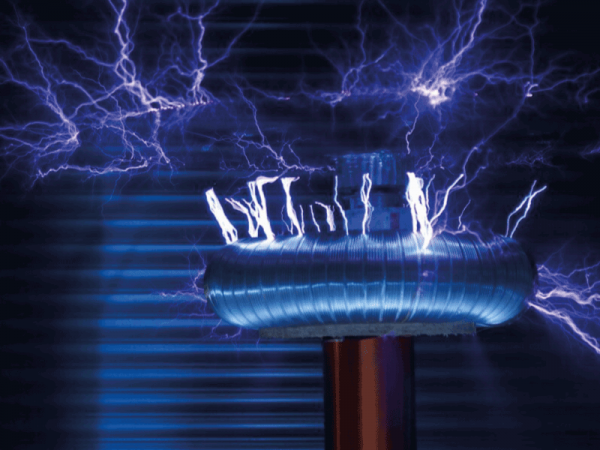(electrical nano-antenna - telecommunications) In order to be usable, electric nano-antennas need to have a very high working frequency.
Researcher and author: Dr. ( Afshin Rashid)
Note: In general, in order to receive the electromagnetic wave in the space, the dimensions of the antenna must be in the same order as the wavelength of the input to its surface. Due to the very small dimensions of nano sensors, nano antennas need to have a very high working frequency to be usable.
The use of graphene helps to solve this problem to a great extent. The speed of propagation of waves in CNTs and GNRs can be 100 times lower than its speed in vacuum, and this is related to the physical structure, temperature and energy. Based on this, the resonance frequency of graphene-based nano-antennas can be two times lower than nano-antennas based on nano-carbon materials. It has been mathematically and theoretically proven that a quasi-metallic carbon nanotube can emit terahertz radiation when a time-varying voltage is applied to its sides.
One of the most important parameters of any nano antenna is the current distribution on it. This characteristic determines the radiation pattern, radiation resistance and reactance and many important characteristics of the antenna. Despite the possibilities of making nanotubes with a length of several centimeters, it is possible to make electrical conductors with a length-to-width ratio of the order of 10^7 . At first glance, nanotube antennas give us the impression that they are similar to dipole antennas designed in small dimensions. But in fact it is not the case in the main theory of Dipole antennas to determine the distribution of current on the antenna, that the Dipole radius is larger than the skin depth and also the resistance loss is so low that it can be neglected. Due to the fact that the nanodipole L/d is significantly reduced, impossible is used. In one-dimensional electrical conductors such as nanotubes, the skin-depth mode is completely eliminated. Because here the electrons are only allowed to move along the length of the conductor, and therefore the current distribution is effectively one-dimensional. In addition to the fact that electrons move in only one dimension, two important Dicker problems also occur, large inductance and resistance. These characteristics create a very different behavior for nanotube antennas compared to classical antennas. The main difference is that the current distribution is alternating with a wavelength that is 100 times smaller than the free space wavelength for a certain thermal frequency. The wavelength of current distribution depends on the wave speed in that mode. If the speed of the wave is the same as the speed of light, the wavelength of the current distribution is the wavelength of electromagnetic waves in free space. On the other hand, the wave speed in nanotubes is about one hundred times lower than the speed of light. This is because in circuit theory, the wave speed is equal to the inverse of the square root of the capacitive capacitance per unit length multiplied by the inductive capacitance per unit length.
Conclusion :
Nano antenna is considered as the primary means of absorbing nano electromagnetic waves in space and nano telecommunication and has its related engineering knowledge which is very developed and wide.
Researcher and author: Dr. ( Afshin Rashid)
Specialized doctorate in nano-microelectronics





